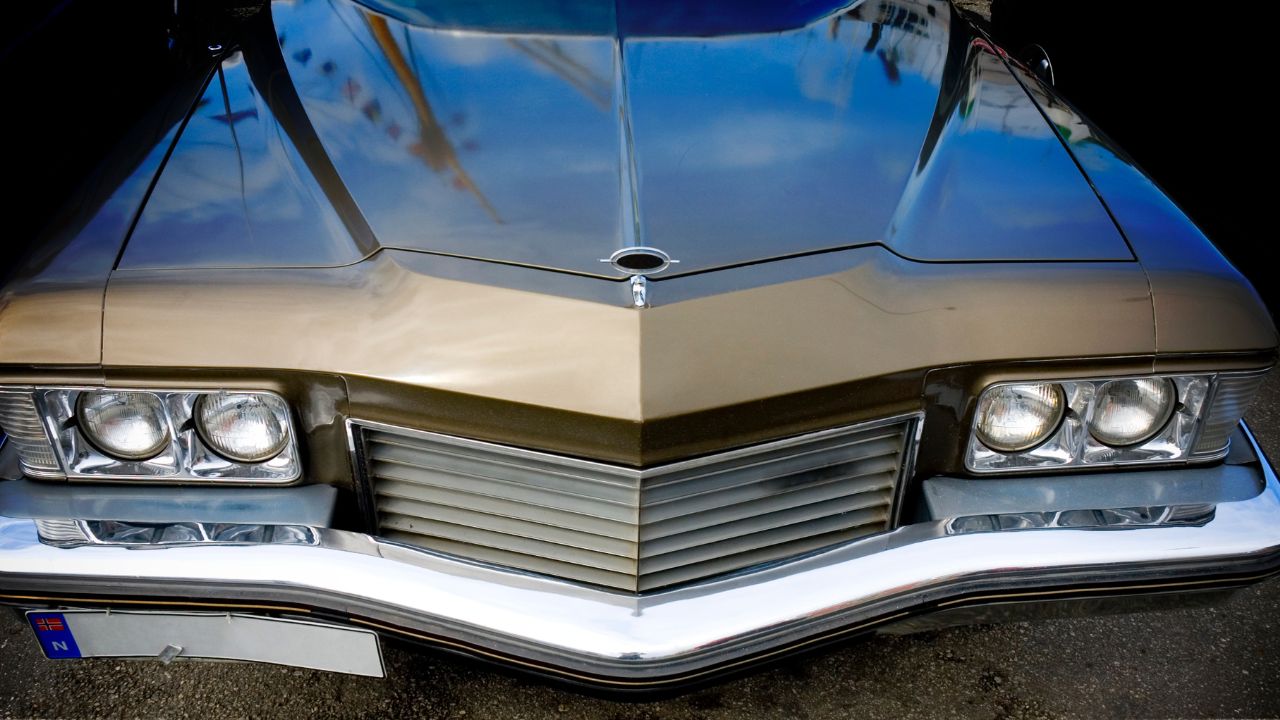
The Ford Focus Estate's boot space is larger than the VW Golf Estate hatchback, so you have plenty of room for all your belongings. It has an adjustable boot level, Shopping hooks and a seatbelt warn system. Continue reading to learn all about the Focus Estate's 375-litre boot capacity. However, before you decide to buy the Ford Focus Estate, take a look at our guide to its boot space.
375-litre boot space
Ford Focus estate's 375-litre cargo space is a welcome addition in the hatchback's already ample load area. Estate has more space than hatchbacks due to its longer wheelbase and flat-floor. This car is a great choice, as it offers more room inside than its hatchback counterpart. It is also larger than the VW Golf Estate.

Adjustable boot flooring
Ford Focus estate has a large boot capacity - 476 litres with the rear seats folded. It's more than the hatchbacks' 210-litre trunk. A ISOFIX mount to fit child seats is also available - an excellent addition to any car. The boot floor can be adjusted to fit your cargo.
Shopping hooks
Ford Focus estate 2019 boots spaces owners can get shopping hooks to increase their bag space. Ford Focus estate models have no floor dividers. But, they do have side hooks on their rear doors. The Focus also has a space-saving spare wheel, which means there is no need to remove the back seat in order to carry heavy objects. Adding these shopping hooks allows passengers to easily hang their shopping bags in the boot.
Seatbelt warning system
Ford Focus estate models have seatbelt warning systems that can provide invaluable safety features. The belt-tightening reminder uses a combination of a chime, an illuminating warning lamp and a light to remind drivers to fasten their belts. The system turns on automatically and sounds an alarm about every six second. The warning chimes once the alarm is engaged for five minutes, every 30 seconds. To disable it, just unbuckle you seatbelt. Follow the instructions to enable it.

Fuel tank
Ford Focus estates are a popular option for people who want to transport large amounts of luggage, but still be able move around comfortably. This car can run up to 434 mi on one tank. It has a 12.4 gallon fuel tank. This means that if you commute 30 miles round-trip, you could only have to visit the petrol station every few weeks. While fuel efficiency can vary between models, Ford Focus's mileage offers a breather for many drivers.
FAQ
How long does an automotive course take?
An automotive course is three years long.
The first year is spent on theory, learning all about cars. The second year is spent on practical training where you learn how to drive, fix engines, and do other mechanical jobs around the car. The final year includes a placement at an auto shop. This gives you real-world experience fixing real problems.
What is the distinction between a mechanic or an automotive technician?
They are both similar, but not identical. A mechanic repairs cars and an automotive technician performs maintenance.
A mechanic must possess good manual dexterity, and be able perform simple tasks efficiently. They should also be able correctly diagnose and repair any problems.
An automotive technician needs to be more technically skilled than a mechanic. They must be capable of reading blueprints and using tools such as drills, wrenches, etc.
They must also be able perform complex procedures safely. They must also be familiarized in different types and electrical systems.
They should also be able understand how different parts interact.
This means that mechanics usually make less money than automotive technicians. But there are many opportunities for both jobs.
What qualifications does a truck mechanic need?
Although you don’t have formal qualifications, you have extensive experience with engines and trucks. Your knowledge is valuable as you are able to quickly diagnose problems and work efficiently.
You also have an excellent knowledge of diesel technology which will help you to understand what parts are needed to repair our vehicles.
To work as an automotive mechanic, do I need a degree? What about part-time study?
A degree isn't necessary, but it certainly helps. Employers prefer candidates who have completed a full degree. It shows that you've put the effort in and have done everything possible to succeed.
You can still study while working, however. Some universities allow students the flexibility to finish coursework during summer vacations and resume their studies later in year. Others allow students to study part-time all year.
What does it take for a mechanic to be a good one?
It takes years of practice and experience to become an expert mechanic. The best way to learn how to repair cars is by working under the supervision of a professional mechanic.
You will have to spend time in a garage learning about cars and mechanics. You will need to be familiar with mechanical engineering books about mechanics, car design, and other topics.
Furthermore, you'll need to enroll in auto school.
It's crucial to start as soon as possible. It doesn't matter if you're old or not to study automotive technology. Get started now if you are interested in becoming a mechanic.
Is a career in automotive mechanic promising?
For those who are passionate about excellence, automotive is a rewarding industry. It is important to work hard and learn as much from others as you can in order to succeed in this industry.
You'll need to have excellent communication skills because you'll spend most of your time talking to customers and other employees. It's important to be flexible and willing to travel. This will make commutes difficult.
If you're interested in pursuing a career in automotive, consider taking classes at community colleges and universities. Many schools have programs that are specifically tailored for students who are interested in automotive sales, repair, and customer service.
Mechanical engineering is a good choice if you are interested in pursuing a degree. A bachelor's degree can be obtained in four years.
Many employers will hire graduates straight out from school. You should start looking for employment as soon as you are able to continue your studies part-time.
After your education is complete, you will probably need some training in order to become an automotive technician.
You will need to pass the Automotive Service Excellence certification exam. This test covers topics like engine maintenance, brakes system, suspension, and many other subjects.
Once you've passed the ASE test, you can apply for a license issued by the National Institute for Automotive Service Excellence.
A license allows you to perform repairs on vehicles owned by private individuals. You'll get compensation based on the amount of services you perform.
It's important to note that not all states require licensing. However, if you plan to work outside your home state, you'll need to obtain a license.
Some states don't issue licenses until after completing a certain amount of training. If you are one of these people, you might need to look for another alternative.
Statistics
- Apprentice mechanics earn significantly less hourly than mechanics who have completed training, with a median wage of approximately $14.50 an hour, according to PayScale. (jobhero.com)
- There were 749,900 jobs available for automotive service technicians and mechanics in 2016, which is expected to grow by six percent through 2026. (jobhero.com)
- The U.S. Bureau of Labor Statistics (BLS) reports that the job outlook for automotive service technicians and mechanics is expected to decline by 4% from 2019 to 2029. (indeed.com)
External Links
How To
How to properly diagnose your car for repair
You should first examine the symptoms your car is showing to determine if it requires repairs. These steps will help you diagnose your car properly.
-
Check engine lights. Check the dashboard light indicators such as the engine light indicator, the oil pressure gauge, the battery light indicator, the coolant temperature gauge, and the RPM gauge. It could indicate that your vehicle is having problems.
-
Take a look at the treads. Tire wear can lead to problems in handling and brake performance. Also, inspect the treads of your wheels. You should ensure that they are clean and smooth. It is best to take off the wheels and remove them. Use a flashlight to see how well the treads are worn.
-
Monitor the level and consistency of your brake fluid. Keep track of the brake fluid level in your vehicle. This will ensure that your brakes run smoothly. Your brakes may fail if the brake fluid level drops.
-
The suspension system should be tested. Vehicles usually have a suspension system that helps absorb shocks and vibrations while driving. It provides better control and allows smoother acceleration and deceleration. A suspension problem can cause your vehicle to feel wobbly and shake uncontrollably. To test whether your vehicle has a suspension issue, try putting weight on the front or rear axle and observe the movement.
-
Examine your steering column. The steering columns are what connect the steering knob to the rest. Steering columns can be damaged by accidents. It is recommended to replace any steering column that feels loose, or shakey.
-
Observe the exhaust pipes. The exhaust pipe helps move gases from a combustion chamber into the atmosphere. You can let harmful fumes into your home if your exhaust pipes crack or leak. It is also important to repair any bends in your tailpipe immediately.
-
Look under your hood. Check under your hood for any unusual or missing components. Leakage of fluids in your engine could indicate that it is leaking. In addition, if you notice an unusual smell coming from your engine compartment, you should contact a professional technician.
-
You should inspect your air filter. Your vehicle's air filter collects dust and debris from the outside environment. Your vehicle will run less well if it has a dirty filter. Replace your air filter regularly.
-
Verify the fan belt. Your vehicle's fan belt connects the engine to the transmission. If the fan belt is damaged, the engine won’t turn. Replacing the belt is simple. You only need a screwdriver or pliers to replace your belt.
-
The radiator hose and hoses should be checked. The radiator hose carries water from the radiator to the engine. It can crack or become damaged and leak hot liquid onto an engine. To repair the leaky hose, all you need is a pair if needle-nosepliers.
-
Be sure to inspect your windshield wipers. Windshield wipers use electricity to remove snow and rain. If they stop working, streaks could be left on your glass. Change the washer fluid to fix the problem.
-
Check the battery cables. Batteries provide power to electrical systems inside your car. When you replace batteries, make sure to disconnect the negative cable first. Failure to do so can damage your alternator.
-
You should check the headlights. Headlights illuminate the road ahead of you. They can make it difficult to see if they stop working. To check if the bulbs have gone out, you can inspect them.
-
Always check your lights. Lights warn other drivers when you approach them at night. It could cause distraction and even lead to an accident if it doesn't work.
-
You should inspect your brakes. Before you have a collision, brakes slow down your car. You could lose control of the car and cause a crash if they don't work properly.
-
Change the oil. Your engine will stay lubricated by the oil. It helps keep metal parts from getting too worn down. It is recommended that the oil be changed every other month.